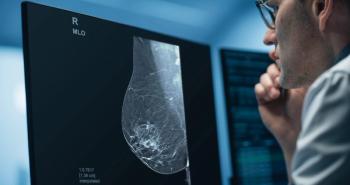
Use of Digital Breast Tomosynthesis Does Not Decrease Screening Mammography Capacity
Some were concerned about increased imaging and interpretation times associated with DBT.
Adopting digital breast tomosynthesis (DBT) is not associated with a decrease in screening mammography capacity, according to a study published in the
Researchers from several states sought to determine whether adoption of DBT was associated with a decrease in screening mammography capacity across Breast Cancer Screening Consortium facilities, given concerns about increasing imaging and interpretation times associated with DBT.
The researchers collected facility characteristics and examination volume data from Breast Cancer Screening Consortium facilities that adopted DBT between 2011 and 2014. They evaluated differences between monthly screening volumes during the 12-month preadoption period and the 12-month postadoption period (with the two periods separated by a 3-month lag) and tested for changes in month-to-month facility-level screening volume during the preadoption and postadoption periods.
Related article:
The results showed that across five regional breast imaging registries, 15 of 83 facilities (18.1%) adopted DBT for screening between 2011 and 2014.
- 11 of 15 (73.3%) had no academic affiliation
- 12 of 15 (80.0%) were nonprofit
- 10 of 15 (66.7%) were general radiology practices
Facility-level monthly screening volumes were slightly higher during the postadoption versus preadoption periods. Monthly screening volumes remained relatively stable within the preadoption period and the postadoption period.
The researchers concluded that in a cohort of facilities with varied characteristics, monthly screening examination volumes did not decrease after DBT adoption.
Newsletter
Stay at the forefront of radiology with the Diagnostic Imaging newsletter, delivering the latest news, clinical insights, and imaging advancements for today’s radiologists.




























